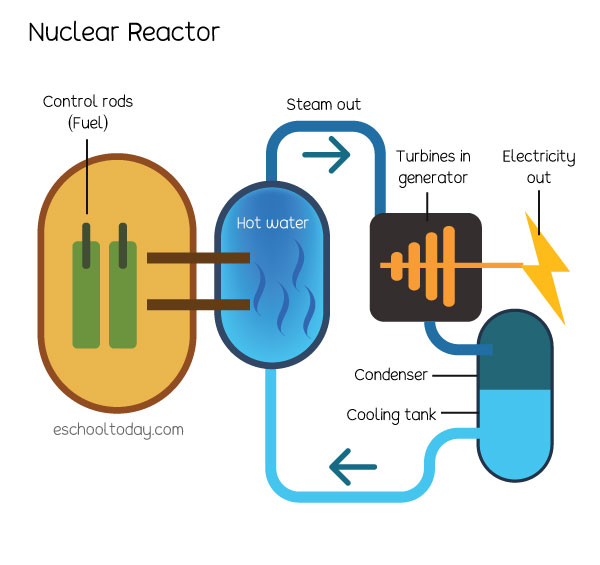- Non-renewable Energy
What is uranium?
Uranium is a naturally occurring metallic chemical found on the earth’s crust. It is denoted by the letter ‘U’, and although it is non-renewable, it is the most commonly used nuclear fuel in commercial power plants. It is found in many places in the world. Energy from uranium is called nuclear energy because of the scientific process used to harness its power.
IMPORTANT:
To understand Nuclear Energy, please look at the lesson (Nuclear Energy) here.
The power generated from a nuclear reaction is similar to that of fossil fuels because they all use heat to turn blades (turbines) to generate power.
A nuclear power plant uses uranium as fuel. Uranium pellets are combined into large fuel assemblies and placed in a reactor core.

In that chamber (reactor), uranium atoms are forced to split, or fission, to release heat. Fission is the process of splitting the uranium atom to form smaller atoms. A kilogram of natural uranium produces as much heat as 20 tonnes of coal. Fission is used to make steam and generate power.
Uranium was first discovered by a German Scientist called Martin Klaproth in 1789. The chamber in which the fission takes place is called a Reactor. In this reactor, uranium fuel is assembled in such a way that a controlled fission chain reaction can be achieved.
It is believed that Uranium was named after the planet Uranus, and it provides the main source of heat inside the earth. Uranium is NOT a fossil fuel. As of 2013, there were over 430 nuclear power reactors in 30 countries, and many more were being built.
CO2 emissions from nuclear fuel are very low, even lower than hydro-power. Nuclear power plants produce dangerous waste called radioactive waste, even though the amount of waste is small (about 3% of the plant’s waste). Nuclear power plants are expensive to build. These are usually disposed of deep underground where geological conditions are stable and far from human or environmental exposure.
In 2011, a tsunami struck Japan and caused problems with its nuclear power plant in Fukushima. After that tsunami, there have been a couple of leakages of highly radioactive water from the plant’s storage tanks into its environment. Radioactive materials are dangerous to humans and the environment.
Countries with nuclear plants must comply with safety rules. Some laws ensure that they do not misuse their plants for developing weapons.
Reading Sources included
1. OECD Nuclear Energy Agency., Nuclear Energy Today. ISBN 92-64-10328-7
2. Fundamentals of Nuclear Power. State Utility Forecasting Group. Juan S. Giraldo, Douglas J. Gotham, David G. Nderitu, Paul V. Preckel, Darla J. Mize, December 2012
